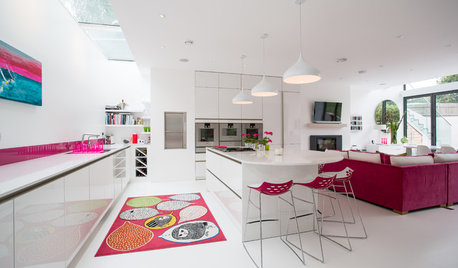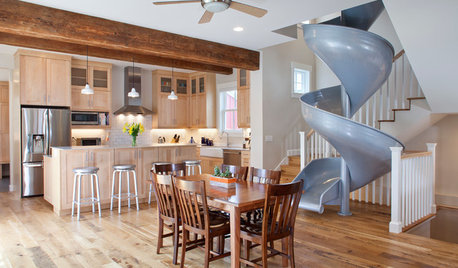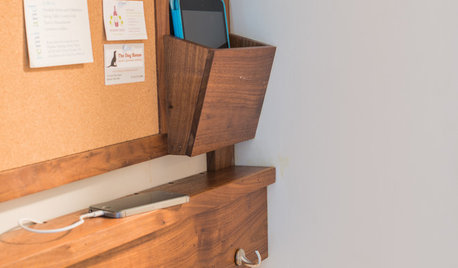Zones and design
Doglips
11 years ago
Related Stories

ORGANIZINGCreate a Family Landing Zone
Keep your kitchen table and counters clear with a place designed for mail, bags and keys
Full Story
BASEMENTSBasement of the Week: From Dumping Ground to Family Zone in Minnesota
Erasing every trace of this basement's former life took creative thinking and smart design touches
Full Story
KITCHEN WORKBOOKNew Ways to Plan Your Kitchen’s Work Zones
The classic work triangle of range, fridge and sink is the best layout for kitchens, right? Not necessarily
Full Story
MOST POPULARKitchen Evolution: Work Zones Replace the Triangle
Want maximum efficiency in your kitchen? Consider forgoing the old-fashioned triangle in favor of task-specific zones
Full Story
BATHROOM DESIGN7 Reasons to Give Your Bath Zone a Living Room Vibe
With a few living room–like touches, you can transform your bathroom into a practical, relaxing retreat that’s overflowing with personality
Full Story
DINING ROOMSNew This Week: 6 Modern Dining Zones in Homes Big and Small
Look to splashy accent walls, right-sized tables and indoor slides to make the most of your open layout
Full Story
THE HARDWORKING HOMEA New Drop Zone Keeps the Clutter at Bay
The Hardworking Home: A clever wall-mounted station for keys, phones and more helps a family stay organized
Full Story
KITCHEN DESIGNStash It All: Know the 3 Zones of Kitchen Storage
Organize storage space around your kitchen’s main activities for easier cooking and flow
Full Story
COLORTime to Step Out of Your Color Comfort Zone?
If you always seem to pick warm tones, or you stick to the cool ones, bucking your natural inclination could bring new energy to a room
Full Story
DECORATING GUIDES10 Ways to Tiptoe Out of Your Decorating Comfort Zone
Ease into waking up your space with small doses of decorating daring that express who you are right now
Full StorySponsored
More Discussions






equinoxequinox
DoglipsOriginal Author
Related Professionals
Franconia Landscape Architects & Landscape Designers · Arlington Landscape Contractors · Elkridge Landscape Contractors · Matteson Landscape Contractors · Alamo General Contractors · Bel Air General Contractors · Browns Mills General Contractors · El Monte General Contractors · Halfway General Contractors · Jefferson Valley-Yorktown General Contractors · Perrysburg General Contractors · Summit General Contractors · Syosset General Contractors · Universal City General Contractors · West Melbourne General Contractorsmendopete
buckstarchaser
colin3
buckstarchaser
DoglipsOriginal Author